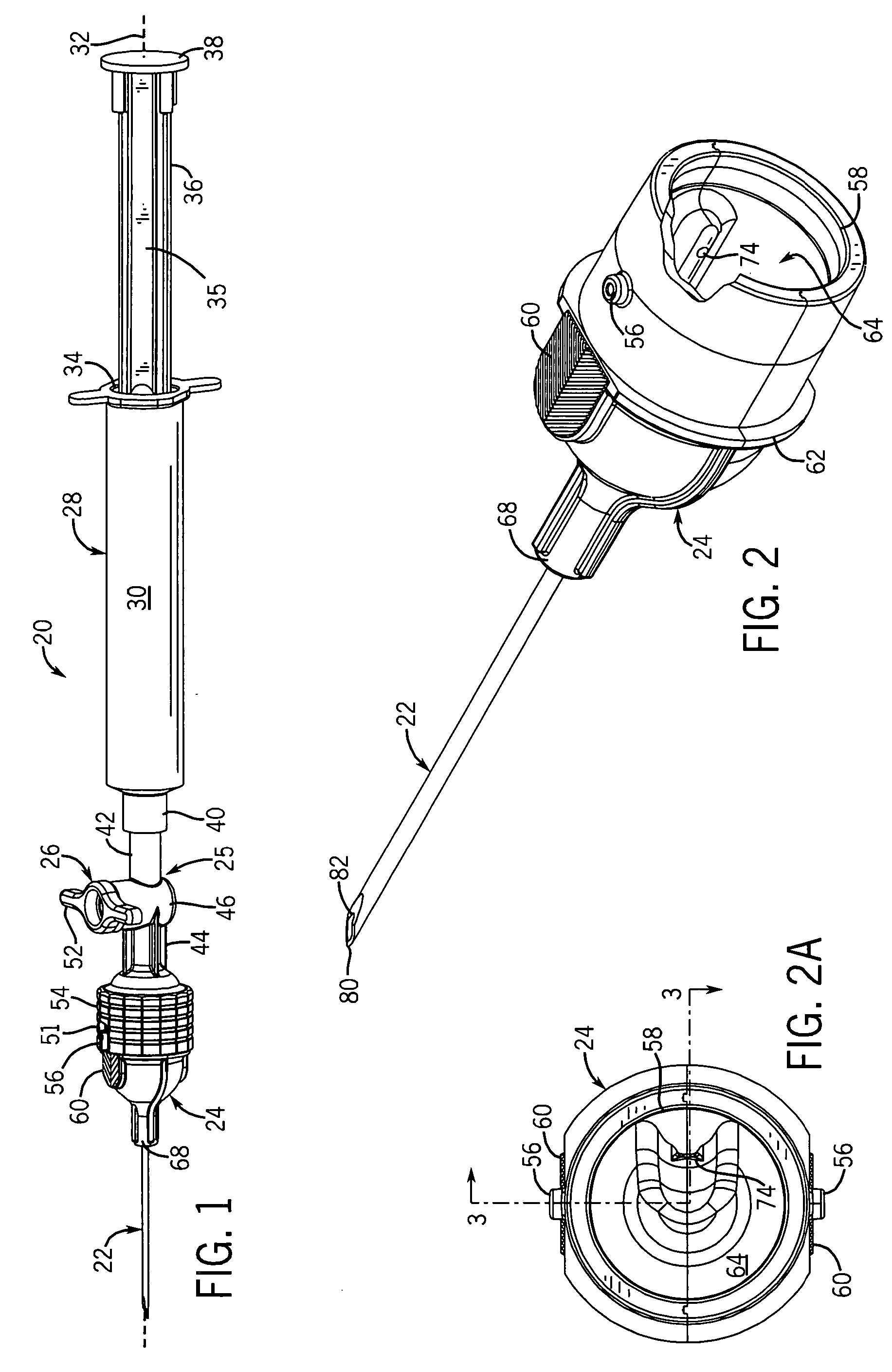Needle aspiration biopsy device and method
- Summary
- Abstract
- Description
- Claims
- Application Information
AI Technical Summary
Benefits of technology
Problems solved by technology
Method used
Image
Examples
Embodiment Construction
[0043] The present invention provides an FNAB device with an anti-reflux head designed specifically to increase the yield of tissue specimens obtained during the biopsy procedure. The anti-reflux head transfers the specimens from the needle and deposits them down into a collection well in a wide-mouth hub. Preferably, the vacuum in the needle is initiated and terminated while the needle is inserted into the specimen sample site, which could be a tumor, lesion or other soft tissue region of interest. Moreover, the needle can have special side scoops for increasing the specimen yield from each pass of the needle through the site.
[0044] Referring now to FIGS. 1 and 4, the FNAB device 20 generally includes a needle 22 mounted to a hub 24 which is connected by a coupler 25, having a valve 26, to an end of a syringe 28. The syringe 28 is generally of standard construction having a tubular barrel 30, extending along a longitudinal axis 32, with a narrow opening (not shown) at one end and ...
PUM
 Login to View More
Login to View More Abstract
Description
Claims
Application Information
 Login to View More
Login to View More - R&D
- Intellectual Property
- Life Sciences
- Materials
- Tech Scout
- Unparalleled Data Quality
- Higher Quality Content
- 60% Fewer Hallucinations
Browse by: Latest US Patents, China's latest patents, Technical Efficacy Thesaurus, Application Domain, Technology Topic, Popular Technical Reports.
© 2025 PatSnap. All rights reserved.Legal|Privacy policy|Modern Slavery Act Transparency Statement|Sitemap|About US| Contact US: help@patsnap.com



